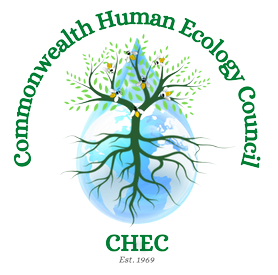The Human Ecology Cake
There are many approaches to Human Ecology. Academically it is an inter-disciplinary study of the relationship between humans and the environment constantly learning and adapting to new research from other disciplines. Human Ecology is an excellent approach to sustainability. However, it can be difficult to understand how all the aspects – the climate, oceans, food security and threats to insects, to name a few - are linked together. To make it easier to understand what human ecology is, I suggest using a human ecology cake. The human ecology cake can be useful when trying to teach children – and adults - about what sustainability is about.
Let’s start from the bottom: the oceans! The deep blue sea is the mainstay for all living creatures and plants. With the help of the sun it provides us with rain and water we all need to survive.
In this basic layer we have the rocks and minerals topped with a layer of soil, one of the most important layers of the cake. The soil is important for the circulation of nutrients for the next layers of the cake, and without it we wouldn’t be here!

Over this comes two layers: one is the plants - from trees to violets and grass to cacti - and the next layer is the living creatures - from insects to elephants and fish to birds - shaping the worlds ecosystems.

Further on top we have the humans and various toppings of culture and religion, economic and social structure. There is also a layer of various ways of extracting resources from the bottom of the cake and to produce the food and drinks we are all relying on from the layer of the ocean and the ecosystems. Over the cake the sun is shining and the atmosphere protects the cake.

It is a huge cake, far too big to take in at once. But you can make it easier to taste if you cut a piece of the cake, incorporating all the layers and then devour it with a good appetite.

So why should we eat this very tasty cake? Well, we all have our individual responsibility for our actions. This cake can help us understand the consequences of our actions as the taste can change drastically if we damage one part of the layer. It might help us to better understand how the various layers of the cake interact with each other and how dependent we are on having all the layers fresh and healthy.
Human ecology is such a good way of finding out about things and for us to ask the question: ‘What then?’ It helps us to take more responsibility for our actions. And is that not what sustainability is all about?
By Eva Ekehorn.
